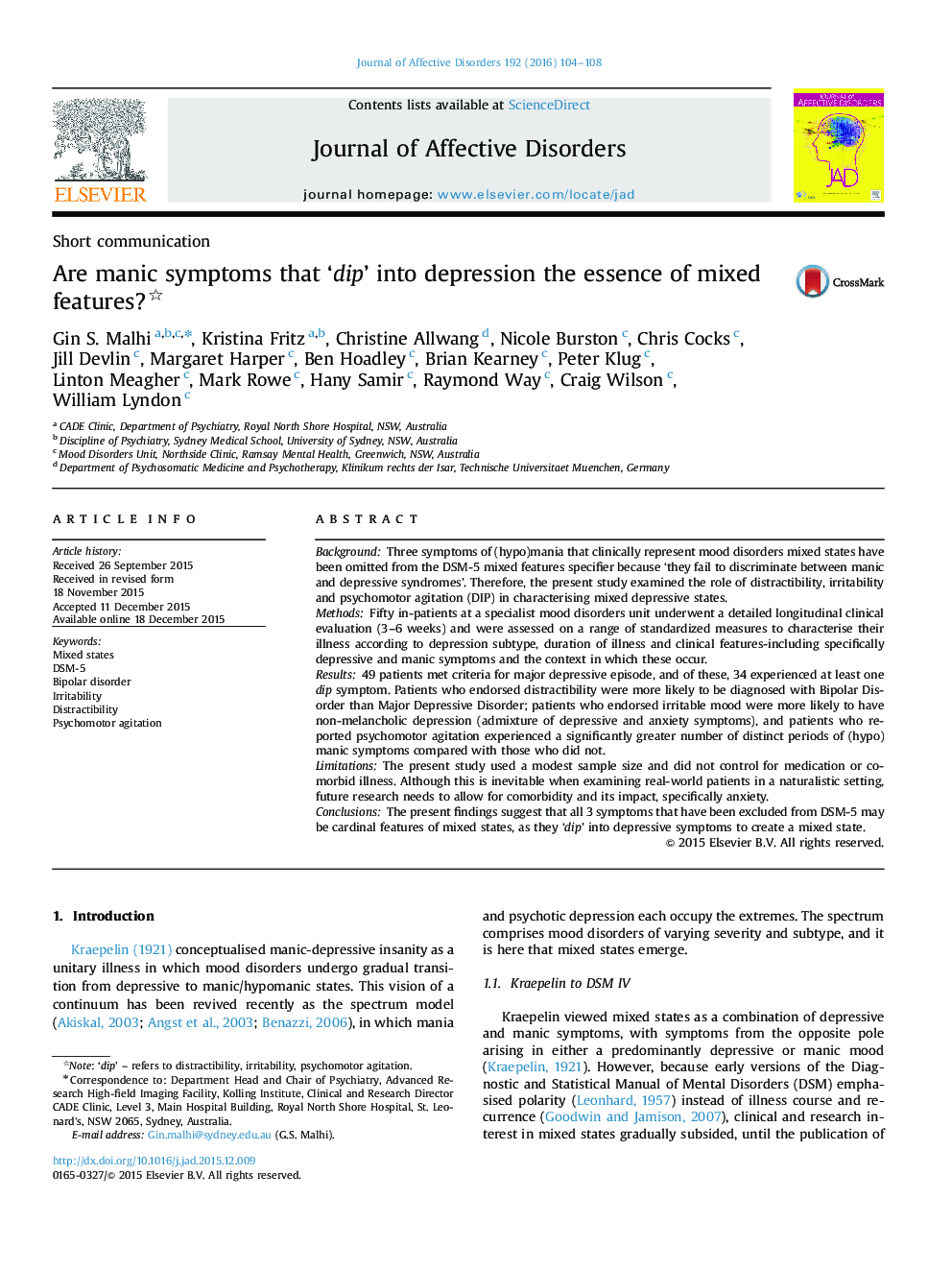| کد مقاله | کد نشریه | سال انتشار | مقاله انگلیسی | نسخه تمام متن |
|---|---|---|---|---|
| 6230609 | 1608133 | 2016 | 5 صفحه PDF | دانلود رایگان |
- We model the nature of mixed depressive states.
- We conduct detailed longitudinal assessments in an in-patient population.
- Distractibility, irritability and psychomotor agitation (DIP) signify mixed states.
- 'DIP' symptoms should be included in the DSM-5 mixed features specifier.
- DIP symptoms may prove useful in subtyping mixed depression.
BackgroundThree symptoms of (hypo)mania that clinically represent mood disorders mixed states have been omitted from the DSM-5 mixed features specifier because 'they fail to discriminate between manic and depressive syndromes'. Therefore, the present study examined the role of distractibility, irritability and psychomotor agitation (DIP) in characterising mixed depressive states.MethodsFifty in-patients at a specialist mood disorders unit underwent a detailed longitudinal clinical evaluation (3-6 weeks) and were assessed on a range of standardized measures to characterise their illness according to depression subtype, duration of illness and clinical features-including specifically depressive and manic symptoms and the context in which these occur.Results49 patients met criteria for major depressive episode, and of these, 34 experienced at least one dip symptom. Patients who endorsed distractibility were more likely to be diagnosed with Bipolar Disorder than Major Depressive Disorder; patients who endorsed irritable mood were more likely to have non-melancholic depression (admixture of depressive and anxiety symptoms), and patients who reported psychomotor agitation experienced a significantly greater number of distinct periods of (hypo)manic symptoms compared with those who did not.LimitationsThe present study used a modest sample size and did not control for medication or comorbid illness. Although this is inevitable when examining real-world patients in a naturalistic setting, future research needs to allow for comorbidity and its impact, specifically anxiety.ConclusionsThe present findings suggest that all 3 symptoms that have been excluded from DSM-5 may be cardinal features of mixed states, as they 'dip' into depressive symptoms to create a mixed state.
Journal: Journal of Affective Disorders - Volume 192, 1 March 2016, Pages 104-108
